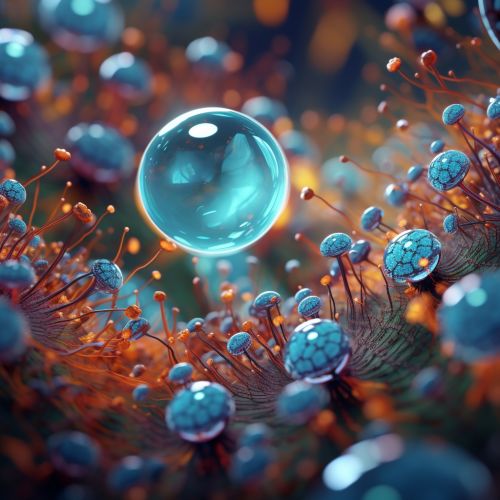Chemotaxis
Introduction
Chemotaxis is a complex, yet fundamental biological process that allows cells to move towards or away from a chemical stimulus. This process is crucial in many biological systems, including the immune response, wound healing, and the development of organisms. In bacteria, chemotaxis is a survival mechanism that allows them to locate nutrients and avoid harmful substances. In multicellular organisms, chemotaxis is involved in a variety of processes, such as the migration of neural crest cells during development and the movement of white blood cells to sites of infection or injury.


Mechanisms of Chemotaxis
Chemotaxis is a complex process that involves the detection of chemical gradients, the transduction of this information into a cellular response, and the generation of cell movement. The mechanisms of chemotaxis can vary greatly among different organisms and cell types.
Chemical Gradient Detection
The first step in chemotaxis is the detection of a chemical gradient. This is accomplished through the use of chemoreceptors, which are proteins that can bind to specific chemicals and initiate a cellular response. In bacteria, these chemoreceptors are located in the cell membrane and can detect changes in the concentration of chemicals in the environment. In multicellular organisms, chemoreceptors can be found on the surface of cells or within the cell itself.
Signal Transduction
Once a chemical gradient has been detected, this information must be transduced into a cellular response. This is accomplished through a series of biochemical reactions known as a signal transduction pathway. In bacteria, the binding of a chemical to a chemoreceptor triggers a cascade of reactions that ultimately leads to changes in the rotation of the bacterial flagellum, causing the bacterium to move towards or away from the chemical stimulus. In multicellular organisms, signal transduction pathways can involve a variety of different molecules and mechanisms, including G protein-coupled receptors, ion channels, and protein kinases.
Cell Movement
The final step in chemotaxis is the generation of cell movement. In bacteria, this is accomplished through changes in the rotation of the bacterial flagellum. In multicellular organisms, cell movement is typically achieved through changes in the cytoskeleton, a network of protein filaments that gives the cell its shape and allows it to move. This can involve the polymerization and depolymerization of actin filaments, the contraction of myosin motors, and the formation and retraction of cellular protrusions known as lamellipodia and filopodia.
Role in Biological Systems
Chemotaxis plays a crucial role in many biological systems, from the survival of bacteria to the development and functioning of multicellular organisms.
Bacteria
In bacteria, chemotaxis is a survival mechanism that allows them to locate nutrients and avoid harmful substances. This is accomplished through a process known as bacterial chemotaxis, which involves the detection of chemical gradients, the transduction of this information into a cellular response, and changes in the rotation of the bacterial flagellum.
Immune Response
In the immune response, chemotaxis allows white blood cells to move towards sites of infection or injury. This is accomplished through a process known as leukocyte chemotaxis, which involves the detection of chemical gradients produced by pathogens or damaged tissues, the transduction of this information into a cellular response, and changes in the cytoskeleton that allow the cell to move.
Development
During the development of multicellular organisms, chemotaxis guides the migration of cells to their correct locations. This is particularly important in the development of the nervous system, where chemotaxis guides the migration of neural crest cells and the growth of neuronal axons.
Conclusion
Chemotaxis is a fundamental biological process that allows cells to move towards or away from a chemical stimulus. While the mechanisms of chemotaxis can vary greatly among different organisms and cell types, the process generally involves the detection of chemical gradients, the transduction of this information into a cellular response, and the generation of cell movement. Through these mechanisms, chemotaxis plays a crucial role in many biological systems, from the survival of bacteria to the development and functioning of multicellular organisms.
